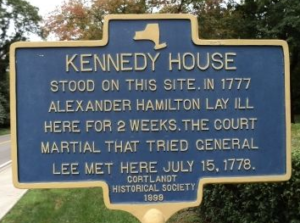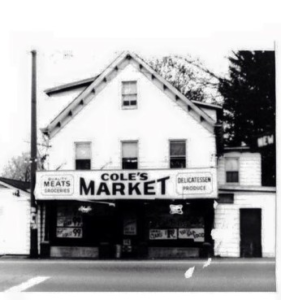
Inhabitants have considered Montrose to be hospitable for thousands of years. When the name George’s Island accurately reflected reality, early post-Ice Age residents piled up a significant shell mound.
After construction of the Albany Post Road in the early 1700s, the place included farms and many trees, which still abound. Like Stony, Croton and Verplanck, there is a Montrose Point, now a state forest.
Historic houses from the Revolutionary War, including Post Hannock and Kennedy, identified as being in Verplanck during the conflict, are now located in today’s hamlet of Montrose in the Town of Cortlandt.
So is the vital King’s Ferry Road and even the original ferry location at Green’s Cove (see the eye-high blue and yellow historical marker identifying the ferry’s location before it moved to the foot of Broadway for the war’s duration).
Boscobel, the most famous and fabulous historic home from Montrose,
is now located about 14 miles away in Putnam County. States Dyckman, a loyalist to the King during the Revolutionary War, built the large house in 1808 with his ill-gotten gains.
It fell into disrepair and got moved to Garrison when the federal government took over the property for the extensive Veterans Administration complex in the 1950s.
In 1959, Westchester County bought George’s Island from the feds and turned it into a park after removing piers and other detritus from the waterfront’s industrial past.
Another prominent family, the Sewards, owned a river estate and summer home. The primary legacy of William, who served as Secretary of State under Abraham Lincoln, is buying Alaska from Russia for $7.2 million in 1867, derided at the time as Seward’s Folly and Seward’s Icebox. His son, Frederick, died at the house in 1915.
Subsequent owner Louis Henry Perlman invented the spare tire in 1906. He successfully protected his patent in court and became wealthy enough to buy the property, but lost everything in the Great Depression.
The Kolping Society, a German Catholic organization based in Manhattan, bought the 50-acre property in 1950. Several historic buildings still stand, except for the main house, which became a vandal magnet.
“We know where it stood and it had a fabulous view of the river,” said
Gerhard Schmitt, society president. “It was a giant, beautiful Victorian home that burned down.”
The name of the hamlet comes from the Montross family, some of whom worked at the large tannery factory in Buchanan and began speculating in nearby land.
Brickyards occupied the waterfront in the late 1800s. Several nearby homes operated as rooming houses, illegal taverns and places of ill repute for the seasonal workers, including 96 Dutch Street, which still stands. Two brickyard owners lived in the spacious home at 151 Dutch Street.
Through at least 1911, David Anderson farmed around 100 acres south of College Hill Road, so named because a couple dozen Columbia University faculty members bought retreats in the area.
Edward L. Thorndike, a psychology professor at Teachers College, moved up in 1906 and brought his friends. Several women from the area established the Hendrick Hudson Free Library in 1931 in Montrose (the longtime site of the Kennedy House).

Hendrick Hudson High School opened for business on April 25, 1928, which bummed out the seniors because they only got to enjoy it for two months. Dorlen T. Cole established a general store in the 1890s and today, his great grandchildren run Cole’s Market.
Trolley Street, just across the Post Road at Glenn’s Tavern (a building that dates to at least the early 1900s), is where the trolley line connecting Verplanck, Peekskill, Oregon Corners and Mohegan passed through town from 1901 to 1927.
Though just a hamlet with no local government, Montrose maintains a strong sense of identity. In 1932, motivated residents created the Montrose Improvement District to provide fire protection and running water, spending $185,000 to tap into the Catskill-Delaware Aqueduct.
They also brought sewers and streetlights to town. The post office moved into its current location in 1961 and delivery began in 1965. For many years, the commuter railroad stopped near Montrose Station Road. Metro-North’s Cortlandt station is within the hamlet’s bounds.
According to one local historian, Montrose might be the place where the term “jerkwater town” took hold. In the 1800s, before electricity moved trains, steam engine boilers needed more water than could be carried onboard, so they had to stop and replenish.
“The locomotives would scoop [or jerk up] water from a trough between the tracks while travelling through some of the smallest towns.” Montrose was “one of the early locations where water was obtained in this manner.”
It’s a theory.
Marc Ferris, a River Journal regular contributor, is the author of Star-Spangled Banner: The Unlikely Story of America’s National Anthem.







